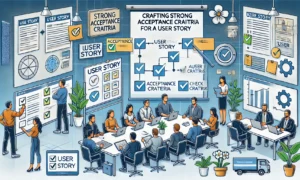Introduction
For early-stage startups, discovering product-market fit is often a long and winding journey filled with uncertainty and rapid pivots. In this environment, product managers are tasked with figuring out what users truly need and how to deliver it, often with limited resources and time. This is where Continuous Discovery comes in, a methodology designed to help teams continuously learn from their customers and iterate on their products to meet their needs.
While continuous discovery has gained traction as a best practice in product management, especially among high-performing teams in established companies, its application in early-stage startups can be both a boon and a challenge. In this article, we will explore how continuous discovery works (and doesn’t) in early-stage startups, and provide practical insights on how startup product teams can leverage it to accelerate growth while avoiding common pitfalls.
What is Continuous Discovery?
Continuous Discovery is a process that emphasizes ongoing engagement with customers to understand their needs, pain points, and behaviors. Instead of relying solely on one-off user testing or annual surveys, continuous discovery involves regularly talking to users, gathering feedback, and using that data to iterate on your product in real-time.
The approach integrates customer feedback into the product development process in a cycle of discovery and validation. It involves practices like:
- Customer Interviews: Regularly speaking with customers to uncover their needs and motivations.
- Usability Testing: Observing how users interact with your product to identify friction points.
- Prototyping and Iteration: Rapidly testing new ideas and features to validate assumptions before fully building them.
- Data Analytics: Leveraging user data and behavior to spot trends and inform decisions.
Why Continuous Discovery Works in Product Management
For any product, and especially in early-stage startups, the ability to quickly validate hypotheses, adjust to feedback, and iterate on ideas is key to success. Continuous discovery provides the flexibility to learn and adapt in real time, ensuring that product decisions are grounded in real user needs and not just assumptions.
1. Rapid Feedback Loops
Early-stage startups often operate in an environment where speed is critical. With limited resources, startups must move quickly to discover which features resonate with customers. Continuous discovery allows for rapid feedback loops, which means product teams can validate ideas or abandon them before investing too heavily. Instead of spending months developing a feature based on assumptions, you can validate or invalidate your ideas early in the process, saving time and resources.
2. Builds Stronger Customer Relationships
By regularly engaging with users through interviews, surveys, or usability tests, startup teams can build a deeper understanding of their customers. This ongoing interaction fosters a sense of trust and loyalty, as customers feel heard and valued. Additionally, this continuous engagement often leads to more insightful feedback that can guide product decisions more effectively than relying on occasional market research or surveys.
3. Helps with Pivoting
Startups are known for their pivoting – changing the direction of the product based on new insights or market forces. Continuous discovery provides the feedback necessary to identify when a pivot is needed and how to implement it. It helps you to listen to the signals from the market and adjust quickly, whether it’s about changing a product feature, revisiting the target audience, or altering your business model.
Challenges of Continuous Discovery for Early-Stage Startups
While continuous discovery offers many benefits, it can also pose significant challenges for early-stage startups, especially when resources are stretched thin, and every decision counts.
1. Resource Constraints
For early-stage startups, the team is often small, and product managers may be wearing many hats. Regular customer interviews, usability tests, and data analysis require a lot of time and effort, especially if you lack dedicated resources for customer research or a user experience (UX) team. This can lead to discovery fatigue, where the team struggles to balance customer research with the actual work of developing and launching the product.
To overcome this, startups can prioritize their discovery efforts. Rather than trying to engage with every customer or conduct endless rounds of interviews, focus on high-priority features or problems that align with the startup’s core goals. Additionally, leverage tools that can help automate parts of the process, like surveys or user feedback software, to gather insights more efficiently.
2. Balancing Customer Needs with Business Goals
Continuous discovery often uncovers a wide variety of customer pain points, desires, and feedback. However, it can be tempting to chase every customer suggestion or pivot too quickly in response to feedback. For early-stage startups, it’s crucial to balance customer feedback with business goals and product vision. Not every customer need should be prioritized, and some feedback may not be feasible or strategically aligned with the long-term direction of the product.
To avoid falling into the trap of reacting to every customer comment, product managers need to filter feedback through the lens of the business’s vision and goals. Use frameworks like OKRs (Objectives and Key Results) to guide prioritization and keep the team focused on solving high-impact problems that align with the startup’s mission.
3. Lack of Sufficient Data
Startups often face a data scarcity problem, especially early on when their user base may be small, and the data is limited. This can make it difficult to make broad conclusions or validate hypotheses based on data alone. Relying on a small sample of users for feedback can lead to confirmation bias, where you overestimate the importance of specific feedback that aligns with your assumptions.
In this case, it’s important to combine qualitative insights from customer interviews and surveys with quantitative data from tools like Google Analytics, Mixpanel, or Amplitude. If your user base is small, conduct microtesting or run experiments with a select group of users to gain more accurate data before scaling the findings.
4. Overwhelming Amount of Insights
A major challenge in continuous discovery is the sheer volume of insights that can be gathered. Constant customer feedback can lead to data overload, making it hard to prioritize what’s truly important. As feedback accumulates, it’s easy to get lost in the details and lose sight of the bigger picture.
To avoid this, startups should set clear research goals for each discovery cycle. Create research questions before talking to customers, and focus on understanding specific aspects of the product experience or user journey. Once feedback is gathered, use structured frameworks like affinity mapping or theme clustering to identify common trends and insights.
How to Make Continuous Discovery Work for Your Startup
Despite the challenges, continuous discovery can be incredibly valuable for early-stage startups when done effectively. Here are some strategies to make it work:
1. Start Small and Prioritize
Don’t try to implement an extensive discovery process from day one. Start small by identifying your highest-priority customer segments and the most critical features to test. Narrow your focus to key pain points and validate assumptions with a small but representative group of users.
2. Focus on Actionable Insights
Gathering feedback is only valuable if it leads to action. Make sure that every piece of feedback you collect can inform a product decision or improve the user experience. Avoid gathering feedback just for the sake of it—ensure that each round of discovery has clear objectives that align with your product goals.
3. Set Up a Feedback Loop
To keep discovery ongoing, create a feedback loop with your customers. Regularly engage them and ensure that their feedback is not only heard but also acted upon. Share updates on how their feedback is influencing product development, which will help build trust and loyalty.
4. Balance Discovery with Execution
While it’s important to be in tune with your customers, you also need to allocate time for product development. Be disciplined about when and how much discovery work is needed and strike a balance between iterating on feedback and delivering product updates to your users.
Conclusion
In early-stage startups, continuous discovery offers a powerful approach to understanding customer needs, validating ideas, and adapting quickly to market demands. However, it requires a strategic, focused approach to avoid resource constraints, data overload, and misalignment with business goals. By starting small, prioritizing actionable insights, and balancing discovery with execution, startups can unlock the full potential of continuous discovery to drive growth and product-market fit. Ultimately, when done well, continuous discovery can be the key to building a product that truly resonates with users and stands out in the competitive startup landscape.



